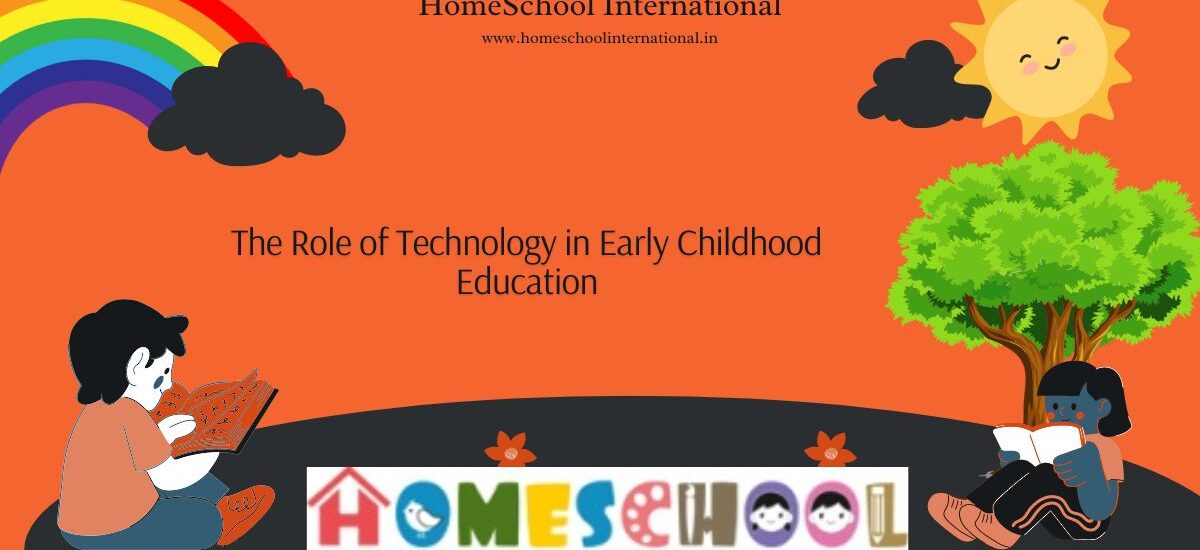The Role of Technology in Early Childhood Education- In today’s digital age, the integration of technology into early childhood education has become a topic of significant importance. As parents, educators, and advocates for quality education, we are constantly seeking innovative ways to nurture young minds and prepare them for the challenges of tomorrow. In this blog post, we delve into the pivotal role that technology plays in shaping the landscape of early childhood education, focusing on its impact, benefits, and challenges. Join us as we explore how leveraging technology can revolutionize the learning experience for preschool children, laying a strong foundation for their academic journey ahead.
Also Check: Childhood Adventures: Outdoor Activities in Preschools
Benefits of Technology in Early Childhood Education
Enhanced Cognitive Development: Incorporating technology into early childhood education can significantly enhance cognitive development in young children. Interactive educational apps, games, and digital tools offer engaging learning experiences that stimulate critical thinking, problem-solving skills, and creativity. By immersing children in interactive digital environments, technology encourages exploration and discovery, fostering a deeper understanding of concepts and subjects.
Personalized Learning Experiences: One of the key advantages of technology in early childhood education is its ability to cater to individual learning styles and abilities. Educational software and digital platforms can adapt to the pace and preferences of each child, providing personalized learning experiences that meet their unique needs. Whether through adaptive learning algorithms or customizable content, technology empowers educators to tailor instruction to the specific strengths and weaknesses of each student, promoting academic growth and success.
Accessibility and Inclusivity: Technology also plays a crucial role in promoting accessibility and inclusivity in early childhood education. Digital resources and assistive technologies make learning more accessible to children with diverse learning needs, including those with disabilities or special educational requirements. From text-to-speech features to interactive learning tools, technology provides avenues for all children to participate actively in the learning process, regardless of their individual abilities or challenges.
By harnessing the benefits of technology in early childhood education, educators can create dynamic and engaging learning environments that inspire young learners to explore, discover, and thrive.
Addressing Concerns
Screen Time and Digital Overload: While the integration of technology in early childhood education offers numerous benefits, it also raises valid concerns about screen time and digital overload. Excessive use of digital devices at a young age has been linked to various health and developmental issues, including eye strain, sedentary behavior, and attention problems. As such, it’s essential for educators and parents to strike a balance between incorporating technology into learning activities and ensuring adequate time for physical activity and face-to-face interactions.
Mitigating Concerns: To address these concerns, educators and parents can implement strategies to mitigate the negative effects of technology use in early childhood education. Setting limits on screen time, establishing tech-free zones or times, and selecting high-quality, age-appropriate digital content are effective ways to promote healthy technology usage habits. Additionally, fostering a balanced approach that combines digital learning experiences with hands-on activities and outdoor play can help children develop a well-rounded set of skills and behaviors.
Importance of Parental Supervision: Parental supervision and guidance are crucial in navigating technology use for young children. By actively engaging with their child’s digital learning experiences, parents can monitor content, provide context and support, and facilitate meaningful discussions about digital citizenship and online safety. Open communication between parents and educators is also essential in addressing concerns and collaboratively fostering responsible technology use habits in young learners.
By proactively addressing concerns surrounding technology in early childhood education and implementing effective strategies for mitigating risks, educators and parents can ensure that technology enhances, rather than hinders, children’s learning experiences.
Also Check: Exploring Montessori: Philosophy and Principles in Early Education
Integrating Technology with Parental Involvement
Empowering Parents as Partners: In the digital age, parental involvement is more crucial than ever in supporting children’s education. Technology can serve as a powerful tool for fostering collaboration between educators and parents, enabling them to work together to enhance children’s learning experiences. Through communication platforms, educational apps, and digital resources, parents can stay informed about their child’s progress, access supplementary learning materials, and engage in meaningful discussions with teachers about their child’s educational needs and goals.
Home Learning Solutions: Home learning solutions that integrate technology offer parents the opportunity to take an active role in their child’s education, even outside of the traditional classroom setting. By providing access to educational apps, online resources, and interactive learning platforms, parents can supplement classroom instruction and extend learning opportunities into the home environment. This not only reinforces concepts learned in school but also fosters a love for learning and exploration in children from an early age.
Supporting Learning Facilitators: Embracing technology in early childhood education can also help parents better understand the role of a learning facilitator and the work that goes into supporting their child’s educational journey. By engaging with digital learning materials alongside their child, parents gain insight into the curriculum, teaching methods, and learning objectives, empowering them to provide targeted support and encouragement that aligns with their child’s educational needs and interests.
By integrating technology with parental involvement, educators and parents can collaborate effectively to create a supportive and enriching learning environment that promotes children’s academic success and personal growth.
Case Studies and Success Stories
Real-Life Examples of Technology Integration: Examining real-life case studies and success stories can provide valuable insights into the effectiveness of technology integration in early childhood education. By showcasing examples of schools, programs, or initiatives that have successfully incorporated technology into their curriculum, educators and parents can gain inspiration and practical ideas for implementing similar strategies in their own educational practices.
Positive Outcomes and Improvements: Highlighting the positive outcomes and improvements observed in children’s learning experiences and academic achievements can further illustrate the benefits of technology in early childhood education. Whether it’s increased engagement, improved academic performance, or enhanced critical thinking skills, sharing success stories can demonstrate the tangible impact that technology can have on children’s educational development and future prospects.
Testimonials and Endorsements: Including testimonials from parents, educators, or experts who endorse the use of technology in early childhood education can provide additional credibility and validation to the effectiveness of technology-enhanced learning strategies. Hearing firsthand accounts of the benefits experienced by students, teachers, and families can reassure skeptics and encourage broader adoption of technology in early childhood education settings.
By sharing case studies, success stories, and testimonials, educators and parents can inspire confidence in the potential of technology to positively transform early childhood education and prepare children for success in the digital age.
Also Check: Monastery Education: A Unique Approach to Child Development
Conclusion: The Role of Technology in Early Childhood Education
In conclusion, the role of technology in early childhood education is undeniably significant, offering a wealth of opportunities to enhance learning experiences, foster parental involvement, and prepare children for success in the digital age. By embracing technology as a valuable tool in the educational toolkit, educators and parents can create dynamic and engaging learning environments that inspire curiosity, creativity, and lifelong learning in young children.
While technology holds immense potential to revolutionize early childhood education, it’s essential to strike a balance between traditional teaching methods and innovative technological solutions. By integrating technology thoughtfully and purposefully into the curriculum, educators can harness its benefits while mitigating potential risks and concerns, ensuring that children receive a well-rounded and holistic educational experience.
As we navigate the evolving landscape of early childhood education, continued collaboration between educators, parents, policymakers, and technology developers will be essential to drive innovation, share best practices, and promote responsible technology use. By working together, we can ensure that technology remains a powerful tool for advancing educational equity, fostering social development, and empowering children to reach their full potential.
In closing, let us embrace the opportunities that technology presents to enrich and enhance early childhood education, with the shared goal of nurturing the next generation of learners and leaders.











